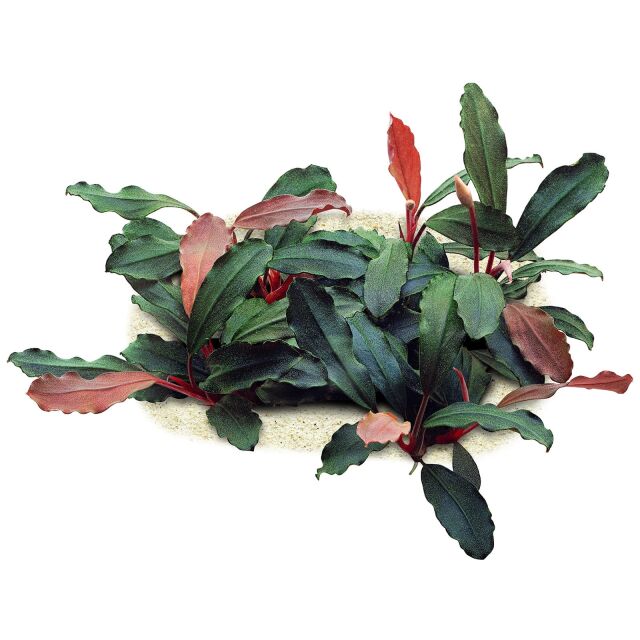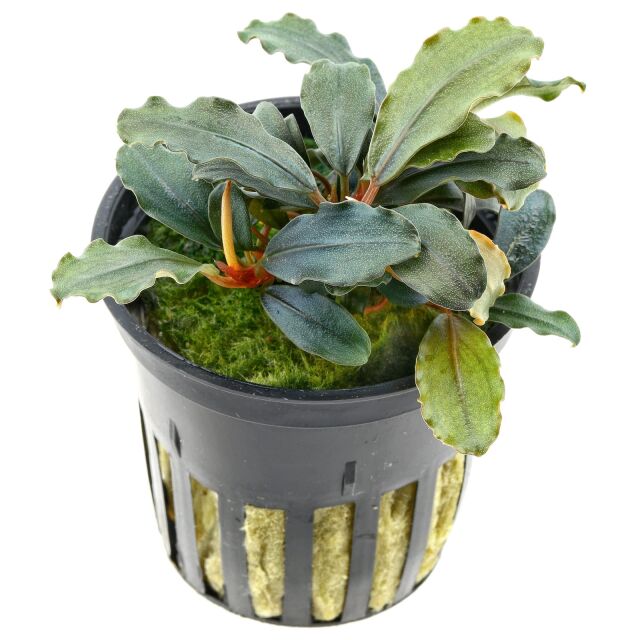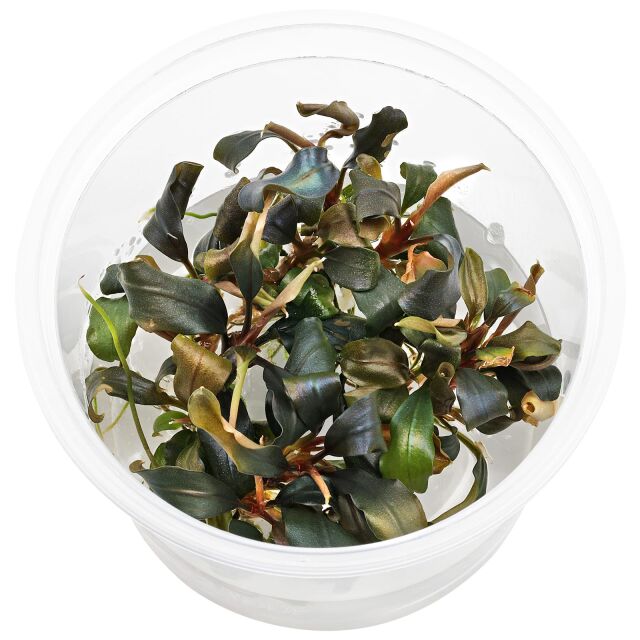



Bucephalandra sp. "Red"
- Attractive, small epiphyte
- Elliptic leaves with wavy margin
- Reddish and dark green tones
Item question
We’re here for you!
Please enter your question and e-mail and we’ll contact you as soon as possible. It usually takes us up to 24 hours during business days to respond.
Thank you for your question!
Thank you, we’ll get in touch!
Close window
You already sent us a question.
Please wait a few minutes
Description
This small to medium-sized Bucephalandra with pretty dark green to reddish brown shades is labelled "Red" by the Tropica company. It is produced in nurseries and tissue culture labs. Its exact origin and species identity are unknown to us, but all Bucephalandra species are native to the island of Borneo and occur there as current-adapted plants (rheophytes) on rocks in the flood zone of streams.
Bucephalandra sp. "Red" resembles B. sp. "Theia Green", but is less compact and grows somewhat slower. In the aquarium it forms spreading to ascending, at least 5 cm long and 3.5 mm thick, strongly branched rhizomes and elongated-elliptical, 4 - 5 cm long, 1.3 cm wide, firm leaves with a round tip. While the emersed leaves are dark olive green, the submerged leaves also show reddish tones and blue-green shimmer. The newly sprouting leaves are light orange-brown to light brown-red, the rhizome tip strong dark brown-red. Under water, the leaves appear densely covered with silvery spots, the stomata. Over time, the plant forms a many-headed group about 8 cm high and at least 18 cm wide through many side branches.
Bucephalandra species and forms are primarily perching plants that attach themselves to rocks or wood with their roots. However, they can also be attached to the substrate, but do not bury the rhizome, as this could cause it to rot. The plant will then take root by itself and benefit from the nutrients in the substrate. Growth is slow.
Bucephalandras can cope with low light, but grow best in medium light, with a constant supply of CO2 and nutrients and good water movement. Strong lighting is tolerated if the nutrient and CO2 supply is sufficient. The temperature can be between 20 and 27 °C.
We recommend placing Bucephalandras in tanks that have already been acclimatised. It is best to let them grow undisturbed for a long time. Sudden changes in conditions can cause the leaves to drop, but usually the plants will slowly form new shoots on the rhizome again afterwards.
Bucephalandras are propagated by cutting off side shoots or head shoots, which also promotes branching of the shoots.
Bucephalandra sp. "Red" is highly recommendable for the hardscape in the aquarium midground. It looks best in a bigger stand. Its rather dark colours contrast well with freshly green mosses.
General information
Please choose a variant to see more information.
| Item no. |
|
| EAN | |
| Weight | |
| Shipping weight |
Customers ask customers
You have questions about this product? Ask other customer or our support team about this product!
Customer reviews
18 Reviews
| 5 Stars(13) |
|
| 4 Stars(3) |
|
| 3 Stars(2) |
|
| 2 Stars(0) |
|
| 1 Star(0) |
|

Subtile touch of details in your tank ;o) Take time to place it carefully and do respect its requirements. (read more)

very interesting if mounted on a rock or on driftwood , plant shipped in perfect condition! Aquasabi is a real top seller

Received some slightly bruised stock with a few damaged leaves. Of the 3 pots purchased only half of the rhizomes have survived, the others dropped all the leaves and the rhizome... (read more)